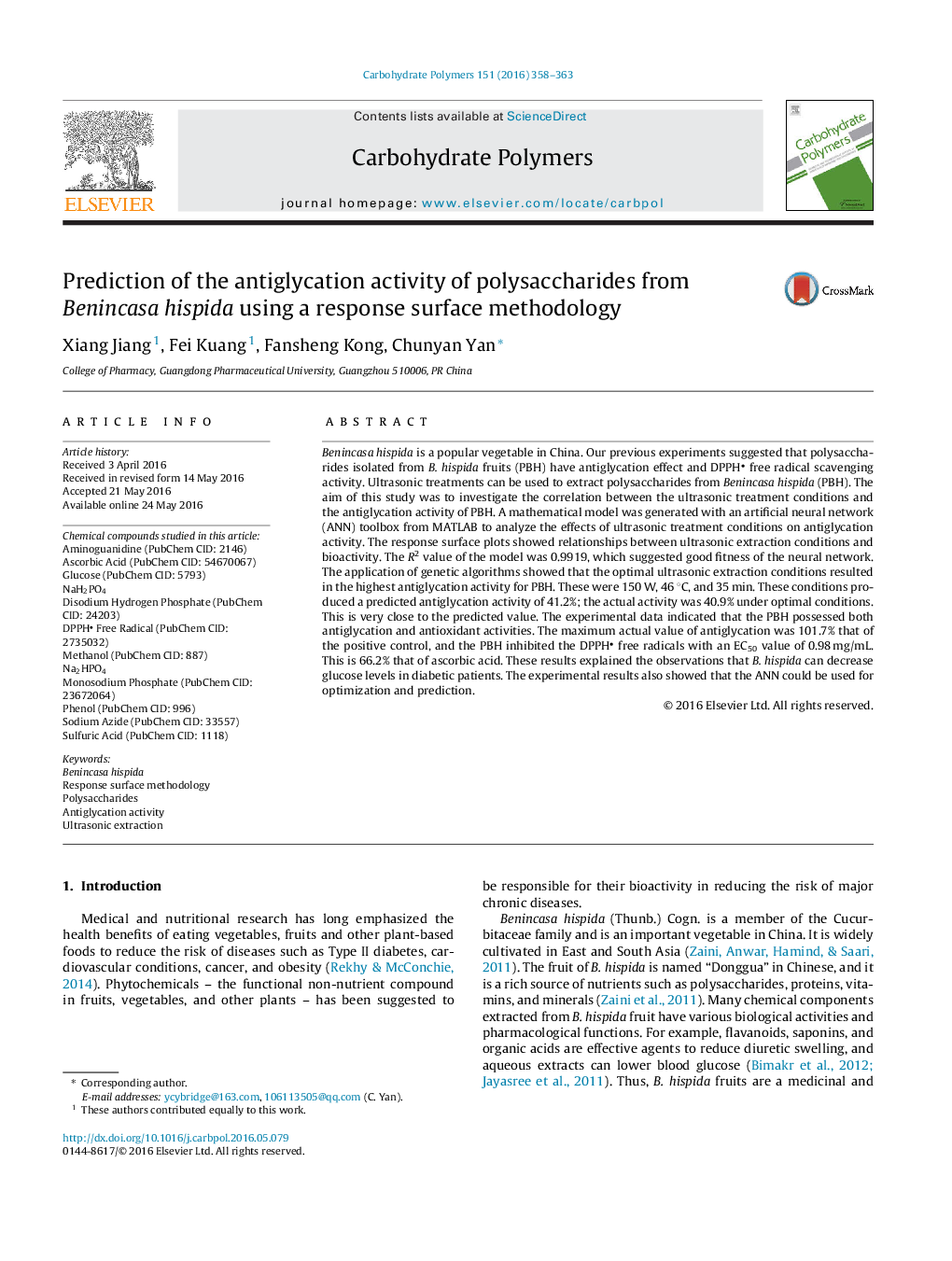| کد مقاله | کد نشریه | سال انتشار | مقاله انگلیسی | نسخه تمام متن |
|---|---|---|---|---|
| 1383006 | 1500607 | 2016 | 6 صفحه PDF | دانلود رایگان |

• Ultrasonic treatment was used to extract polysaccharides from Benincasa hispida.
• The optimum extraction conditions were predicted by response surface methodology.
• The predicted and actual values were in good agreement.
• The highest antiglycation activity of PBH reached 101.7% that of positive control.
• The experimental data explained why B. hispida could decrease glucose in diabetics.
Benincasa hispida is a popular vegetable in China. Our previous experiments suggested that polysaccharides isolated from B. hispida fruits (PBH) have antiglycation effect and DPPH free radical scavenging activity. Ultrasonic treatments can be used to extract polysaccharides from Benincasa hispida (PBH). The aim of this study was to investigate the correlation between the ultrasonic treatment conditions and the antiglycation activity of PBH. A mathematical model was generated with an artificial neural network (ANN) toolbox from MATLAB to analyze the effects of ultrasonic treatment conditions on antiglycation activity. The response surface plots showed relationships between ultrasonic extraction conditions and bioactivity. The R2 value of the model was 0.9919, which suggested good fitness of the neural network. The application of genetic algorithms showed that the optimal ultrasonic extraction conditions resulted in the highest antiglycation activity for PBH. These were 150 W, 46 °C, and 35 min. These conditions produced a predicted antiglycation activity of 41.2%; the actual activity was 40.9% under optimal conditions. This is very close to the predicted value. The experimental data indicated that the PBH possessed both antiglycation and antioxidant activities. The maximum actual value of antiglycation was 101.7% that of the positive control, and the PBH inhibited the DPPH free radicals with an EC50 value of 0.98 mg/mL. This is 66.2% that of ascorbic acid. These results explained the observations that B. hispida can decrease glucose levels in diabetic patients. The experimental results also showed that the ANN could be used for optimization and prediction.
Journal: Carbohydrate Polymers - Volume 151, 20 October 2016, Pages 358–363